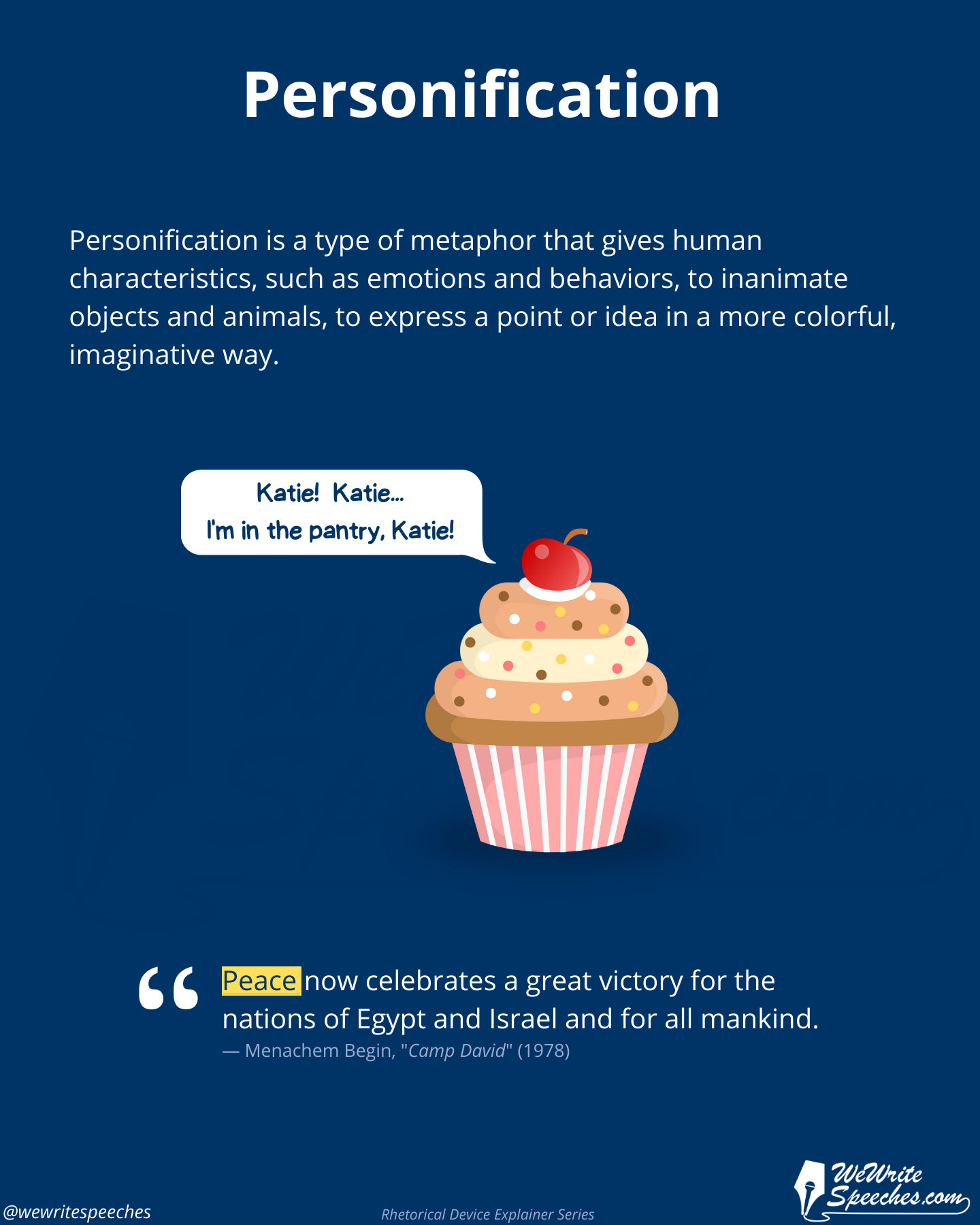Rhetorical Device: Personification
Personification is a rhetorical device that gives human characteristics to non-living objects or abstract concepts. It is used to create vivid imagery and help explain complex ideas. Personification can also be used to bring life to stories and help listeners create a mental image of the topic being discussed. It is especially useful in public speaking as it can help make a speech more relatable, as it allows the speaker to connect their ideas to something the audience can visualize.
Examples
But ultimately, ladies and gentlemen, the president of the United States won the day. And peace now celebrates a great victory for the nations of Egypt and Israel and for all mankind. Menachem Begin, "Camp David" (September 1978)
Once again, the heart of America is heavy. The spirit of America weeps for a tragedy that denies the very meaning of our land.
The life of a man who symbolized the freedom and faith of America has been taken. But it is the fiber and the fabric of the Republic that is being tested. Lyndon B. Johnson, "Upon proclaiming a day of mourning following the death of MLK (5 April 1968)
Folks, the story of America is a story of progress and resilience, of always moving forward, of never, ever giving up. It’s a story unique among all nations. We’re the only country that has emerged from every crisis we’ve ever entered stronger than we got into it. Joe Biden, "Second Presidential State of the Union Address" (7 February 2023)

